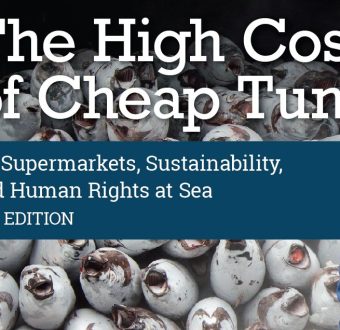These are some of the findings of a new Greenpeace India report, Endangered Waters, which identifies the potential for social unrest if the planned expansion in the number of coal-fired power plants goes ahead.
Lack of access to irrigation water has already been linked to the suicides of thousands of farmers in the area and investing in thirsty coal-fired power plants will only exacerbate water problems in a region that has a long history of under development.
Greenpeace India is calling for an immediate moratorium on allocating water to coal power plants in Vidarbha, while existing allocations must be also re-examined to ensure that the irrigation needs of farmers are not jeopardized.
Additionally, under the Energy [R]evolution scenario, developed by Greenpeace and partner organizations, almost half of Indias power could be provided by renewable energy by 2030, saving billions of cubic meters of water that could irrigate 3.6 million hectares of farmland.
 Farmers in Vidarbha struggle to make a living and feed their families
Farmers in Vidarbha struggle to make a living and feed their families
 Irrigation has made the farms that do get water more productive.
Irrigation has made the farms that do get water more productive.
 When they have water, the small farms can be viable.
When they have water, the small farms can be viable.
 Dams feed canals that supply water to some farmers, but not all.
Dams feed canals that supply water to some farmers, but not all.
 The higher yields that come with irrigation have increased the income of some farmers.
The higher yields that come with irrigation have increased the income of some farmers.

 Now, the farmers face the threat of losing water to 71 new coal plants in their area.
Now, the farmers face the threat of losing water to 71 new coal plants in their area.
 Farmers are fighting back. Through their protests, they forced a 60% cut in water use at one plant.
Farmers are fighting back. Through their protests, they forced a 60% cut in water use at one plant.
 The fight for water will intensify. If the 71 new coal plants go ahead, farmers will lose water, others will never get it. And on occasion, the main river will dry up.
The fight for water will intensify. If the 71 new coal plants go ahead, farmers will lose water, others will never get it. And on occasion, the main river will dry up.

